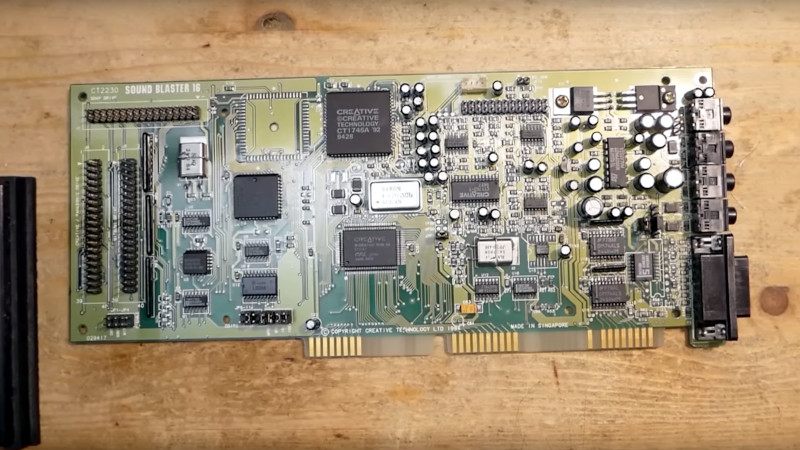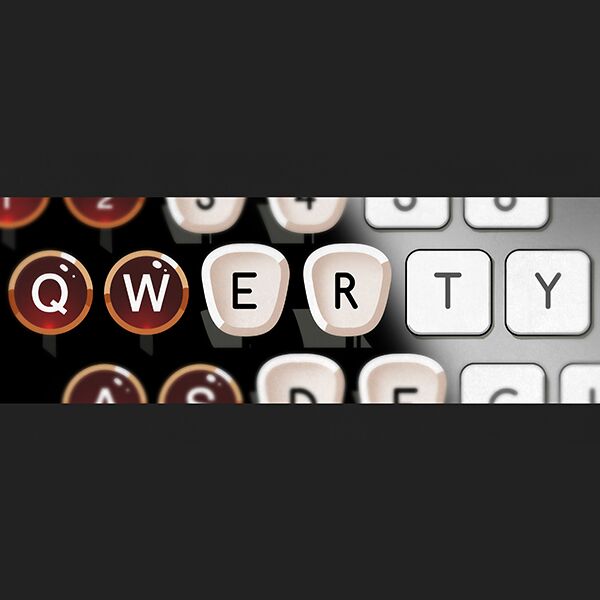Sound hardware has been built into PC motherboards for so long now it’s difficult to remember the days when a sound card was an expensive add-on peripheral. By the mid to late 1990s they were affordable and ubiquitous enough to be everywhere, but three decades later some of them are starting to fail. [Necroware] takes us through the repair of a couple of Creative Labs Sound Blaster 16s, which were the card to have back then.
The video below is a relaxed look at typical problems afflicting second-hand cards with uncertain pasts. There’s a broken PCB trace on the first one, which receives a neat repair. The second one has a lot more wrong with it though, and reveals some surprises. We would have found the dead 74 series chips, but we’re not so sure we’d have immediately suspected a resistor network as the culprit.
Watching these cards become sought-after in the 2020s is a little painful for those of us who were there at the time, because it’s certain we won’t be the only ones who cleared out a pile of old ISA cards back in the 2000s. If you find one today and don’t have an ISA slot, worry not, because you can still interface it via your LPC bus.
















Anyone who cares about good audio will have a internal or external 96/192kHz 24 bit sound card.
They are night vs day better than built in(motherboard) SC’s
And if you are a ham who does “digi modes”- you will decode signals better.
Good to see these old cards coming back to life, I had many of them(gray beard).
Couldn’t agree more…got a Soundblaster Z in my main rig.
There was a time when those MB’s had 5.1 or 6 channels out now mostly 2 out and maybe no line in at all. I have a dozen Soundblaster and other cards 32 bit stuff. One is running with XP as a off-line recorder to convert old tapes.
I’d love to but last I checked I felt like I could only find no-name junk or overpriced ‘audiophile’ equipment.
I threw out a 1MB gravis ultrasound in the early 2000s. Especially gutted as I’m normally a hoarder – I don’t know what came over me :(
No
I am still running a Soundblaster X-fi card in my PC. Did the opamp and capacitor mod on it. Much better sound. https://www.overclock.net/threads/incredible-x-fi-mod-will-void-your-warranty-56k-warning.185072/
About sound cards being expensive: Yes and no, I think. It depends.
Good 48KHz 16-Bit stereo sound cards with wavetable were quite pricey.
This were the type of sound cards you could use for real audio editing in the studio.
Such as AWE 64 Gold (ISA), Turtle Beach sound cards, Ensoniq Soundscape S-2000 or an EWS 64XL (PCI, but supported by MOD4WIN)..
Or an SB16 with a DB50XG MIDI daughterboard (waveblaster header).
The Roland MT-32 and SC-55 MIDI modules (expanders) were sought after, too.
A basic AdLib compatible or Sound Blaster Clone (8-Bit, mono, 22 KHz) was dirt cheap by early 90s, though.
There had been highly integrated chipsets such as ESS ES488, ES688 etc.
And many SB clones using discrete 8051 microcontrollers, too.
So it really depends.. Everyone had the opportunity to join the party somehow.
By early 90s, poor users could have afforded at least a Turbo XT with a basic VGA card (256KB) and a monochrome VGA monitor.
Along with a plain AdLib or CMS music card. Or a no-name Sound Blaster.
Some AdLib cards also had a Covox Speech Thing compatible DAC as an extra.
It was a basic resistor ladder, essentially.
An TurboXT with a NEC V20 at ~10 MHz was on eye level with a basic PC/AT,
an extra 8087 for productivity software had become cheap.
Hello, my old friend…
Not a hoarder, you’re an ‘archivist’ :)
Oh how I miss the days of the 8086 w/8087 1meg mono vga and 2 – 5.25 floppy’s.
Add a 10meg HD(on a 8-bit ISA that weighed 5 pounds!!)
Never thought I would fill it up—- Few days later–FULL…lol
Lets not forget the Hamcomm 741 “modem” on the serial port.
And the old Epson dot-matrix.
+1
The BayCom Packet-Radio modem on the serial port was nice, too, though!
Let’s don’t forget the Genius handy scanner (say GeniScan 4000) and Genius mouse (say GM-6).
Example video: https://www.youtube.com/watch?v=ulccjXS0wPk
A HP LaserJet or an HP Deskjet 500c does complete the setup.
If there’s some room in the chassis, still, then an Mitsumi LU005 single-speed CD-ROM drive would be nice.
Was among the most affordable CD-ROM drive model in ~1992/93.
For technical drawing needs a Summasketch compatible drawing board was nice to have, too!
And to handle the overflowing HDD, a QIC streamer was a solution.
Cassettes did hold 100 MB or so. SyTOS was a popular backup software at the time.
I forgot to mention GeoWorks Ensemble.
It was a graphical environment similar to Windows 3.0, but was intended for low-end PCs (though V20/V30 was practical minimum).
It was a bundle with a complete suite of office programs, comparable to MS Works.
It could also use swap file, EMS, XMS, so complex work could be done on any PC generation.
Later versions also added support for Sound Blaster (mono, 8-Bit).
There’s even a third-party shareware utility for those FM radios..
You know, those FM radio serial port dongles / FM radio ISA cards.
They were a thing in early 90s. These radios had a fancy GUI, often, resembling an 80s/90s HiFi tuner.
I have my Gravis Ultrasound Max with memory upgrade in a frame. How much they worth these days?
Depends of the “currency”. Collector’s value, material value or sentimental value etc.